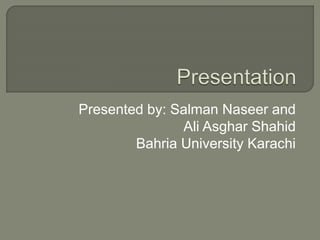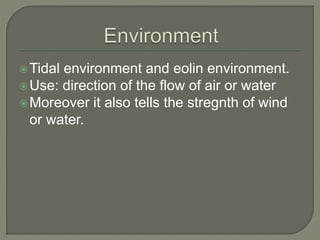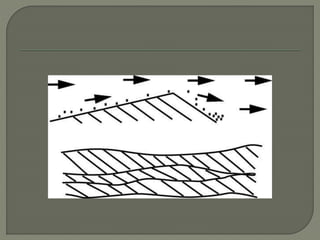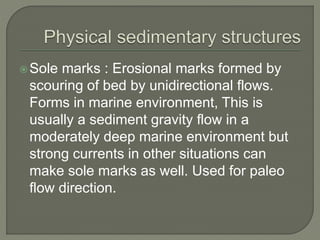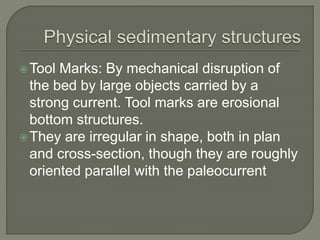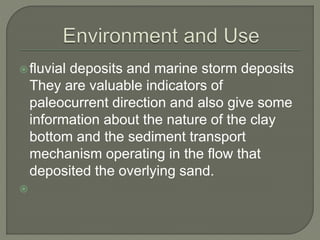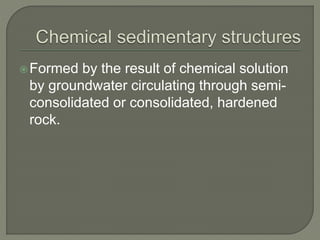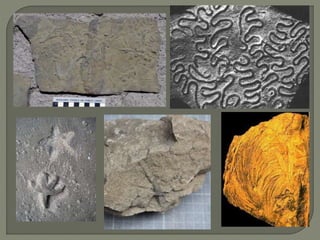The document discusses various types of sedimentary structures classified based on their formation process. Primary structures form during deposition without external forces, while secondary structures form after deposition due to forces. Examples of primary structures include ripple marks, cross-bedding and flaser bedding. Secondary structures include sole marks, tool marks and groove marks formed by erosion. Chemical structures also form via processes like dissolution and precipitation. Sedimentary structures provide clues about depositional environments and sediment transport directions.
